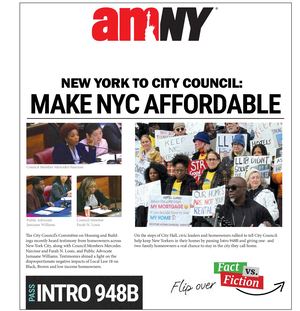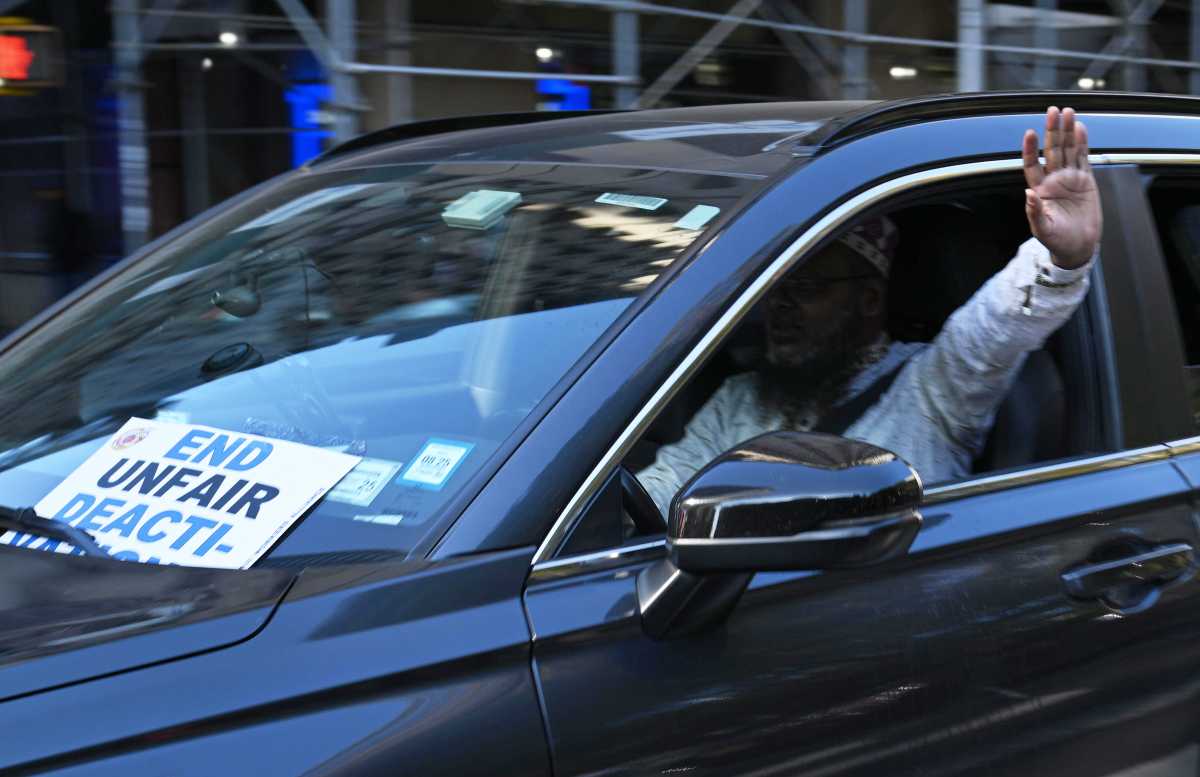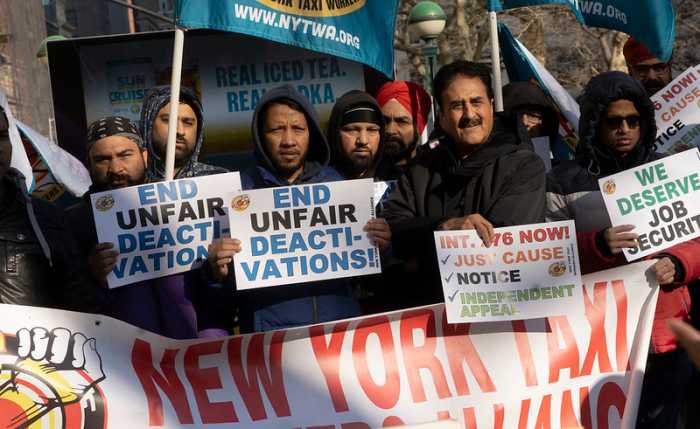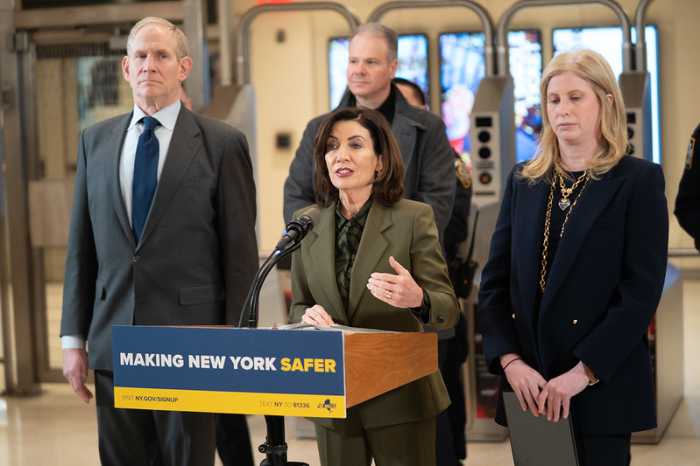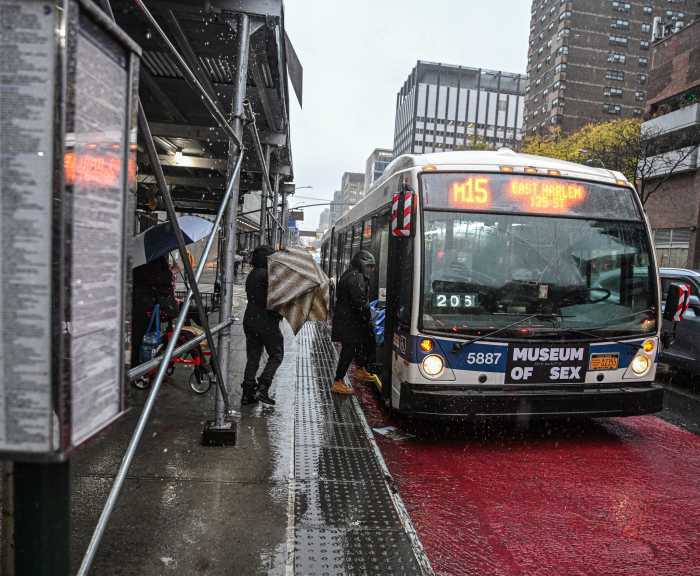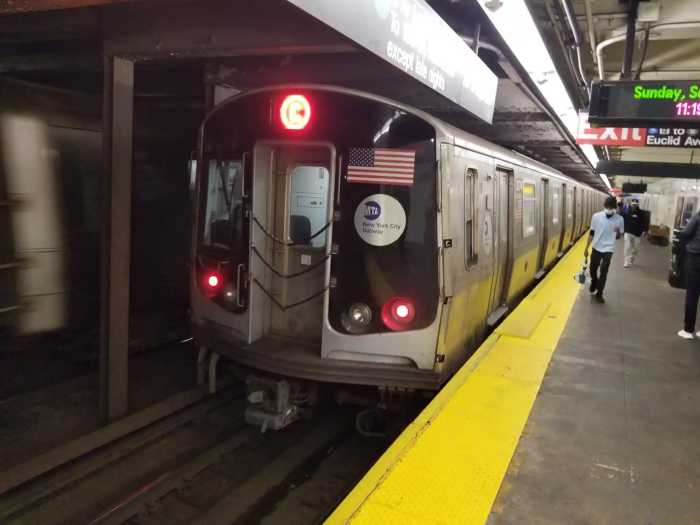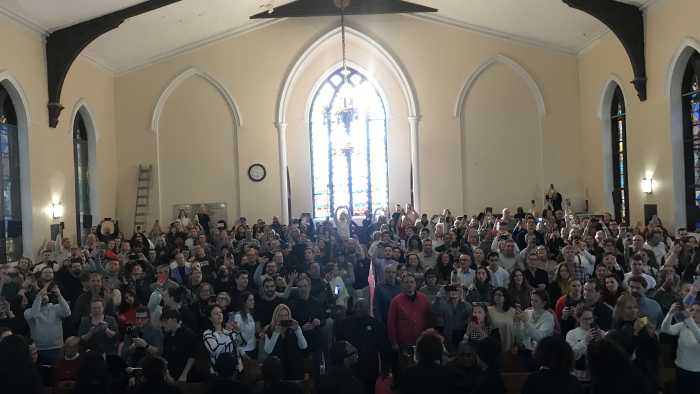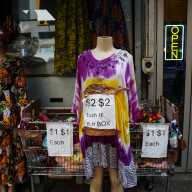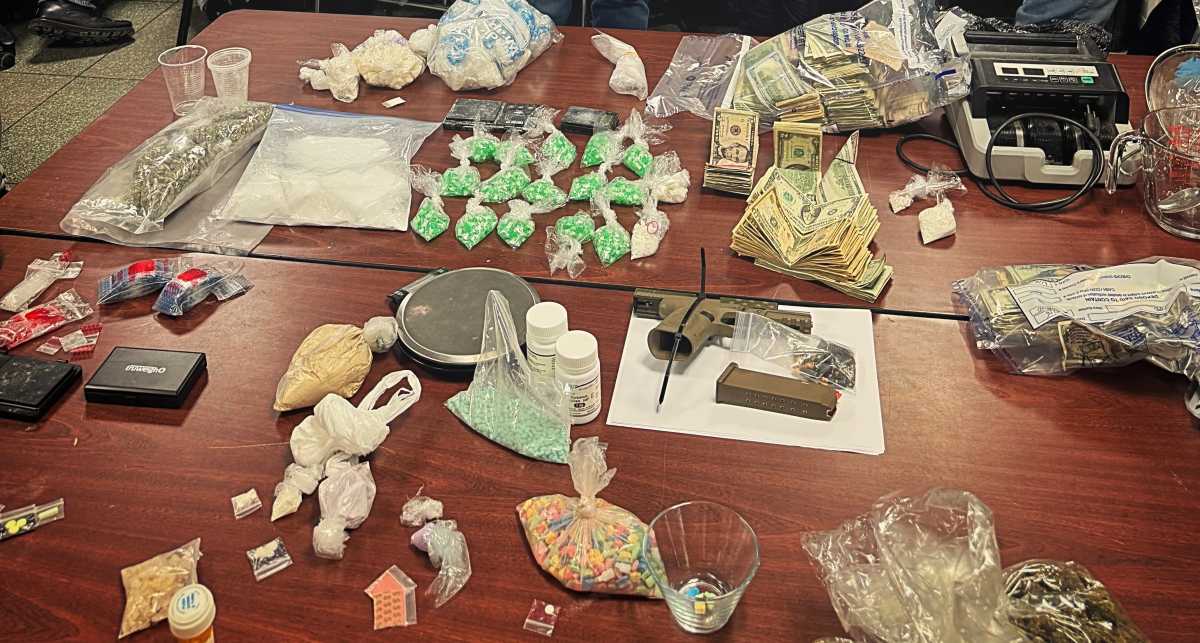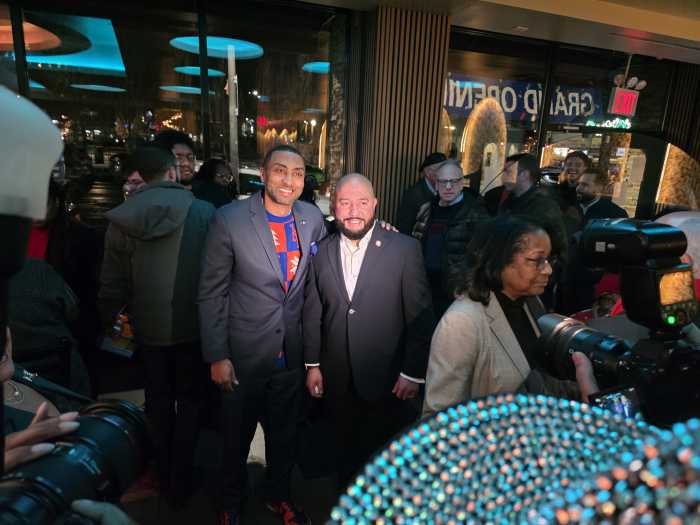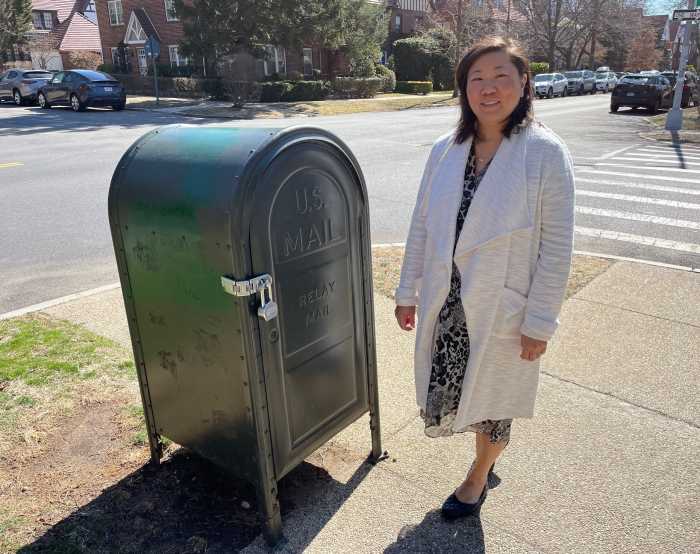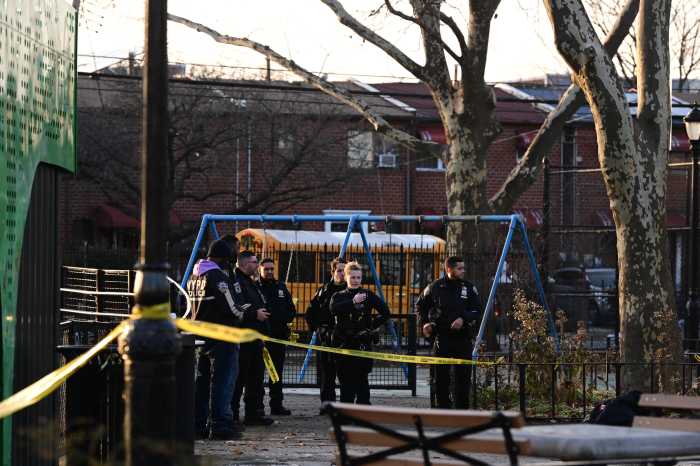Hundreds of Uber and Lyft drivers blockaded Manhattan traffic Wednesday morning, demanding an end to “lockouts” by Uber and Lyft.
The New York Taxi Workers Alliance (NYTWA) says over 1,000 drivers participated in the blockade on Monday morning, stretching along 11th Avenue from 30th Street all the way to 48th Street. Drivers traveled to City Hall and beyond, honking on the “horns of justice” to demand fair pay and the ability to work without disruption.
Since this summer, many Uber and Lyft drivers have been unable to accept rides through the two dominant apps for hours or even days at a time. NYTWA has said the lockouts are a move by the rideshare giants to game the city’s minimum pay rules by manipulating a metric key to determine the rates earned by drivers.
By locking drivers out of the apps, Uber and Lyft can effectively inflate a metric called the “utilization rate,” which measures how much time drivers carry passengers versus their total time on the road. If the utilization rate is higher, then drivers are supposedly picking up more fares, and the apps can pay lower per-minute and per-mile rates to their drivers under the city’s minimum pay rules.
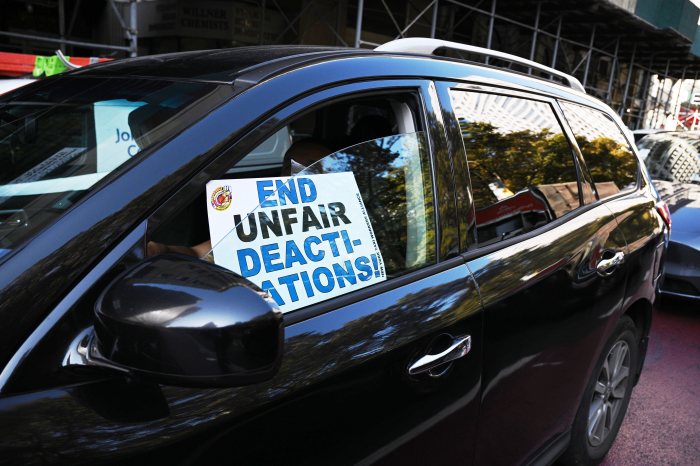
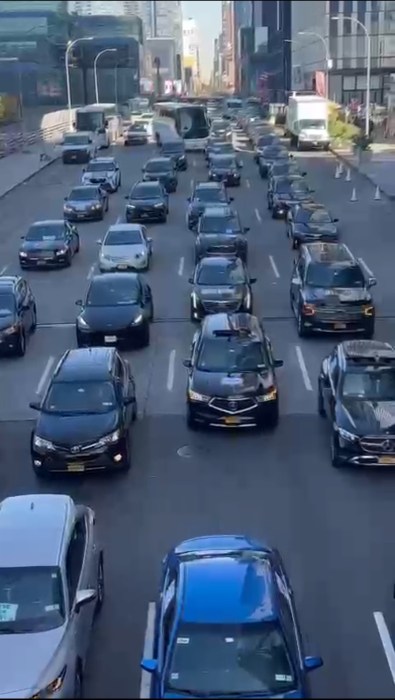
“This summer, Uber and Lyft started locking out drivers so that they could make drivers look less empty than they are while on the app, so then they don’t have to pay drivers for all the hours that the drivers are working,” said Bhairavi Desai, the longtime leader of NYTWA. “We’re talking about really basic pay.”
Bloomberg reported that these moves have cost drivers millions of dollars in income and driven many to the financial brink. Some have said they had to take out loans and max out their credit cards just to pay their rent and bills.
One driver amNewYork Metro spoke to is using a busted-up car involved in a crash because he no longer can afford to fix or replace it, having lost about 40% of his expected income this summer.
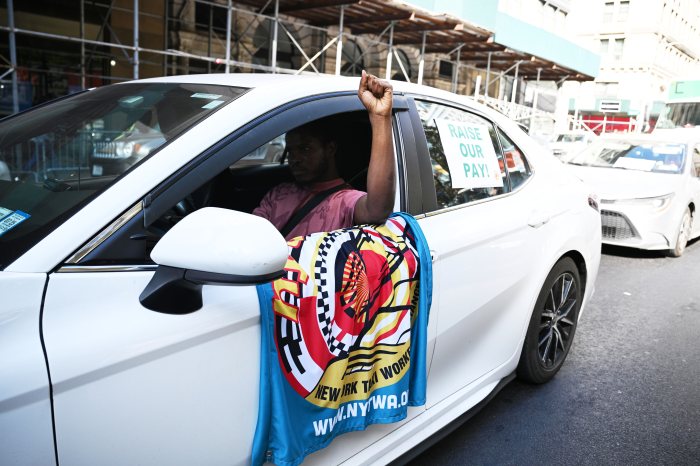
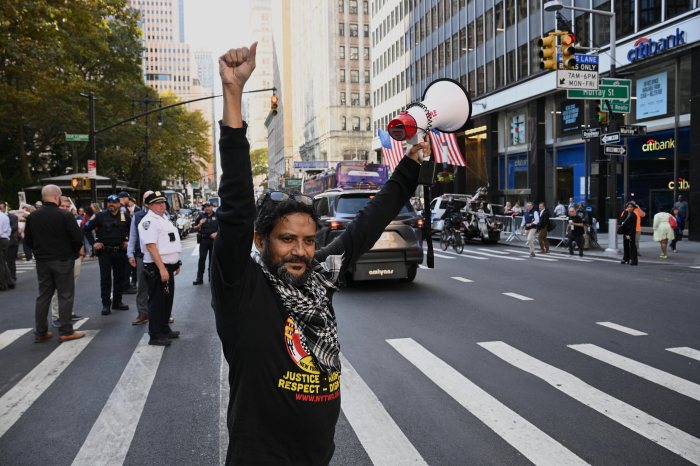
“I had a car accident. I cannot afford to buy a new car because I’m scared, I’m dependent from earning. And now I cannot afford to pay for the new car,” said the driver, Blerim Skoro. “So this is the reason we are here to protest.”
Following drivers’ protests and threats of tighter regulation by the Taxi & Limousine Commission (TLC), the city brokered a deal this summer with the apps that Mayor Eric Adams said would end the lockouts. But NYTWA has deemed it “phony” because it effectively had Uber agree to end lockouts on the condition that Lyft increase them to up its own utilization rate.
Skoro, for one, called Adams “a crooked mayor” who “needs to be in jail.” One of Adams’ potential successors, Queens Assembly Member Zohran Mamdani, stopped by the protest and accused the apps of “stealing” $200 million from drivers.
“I will make sure these issues are ones of the past and not the future,” said Mamdani. “We are going to make the TLC an agency that protects drivers and not the companies that exploit them.”

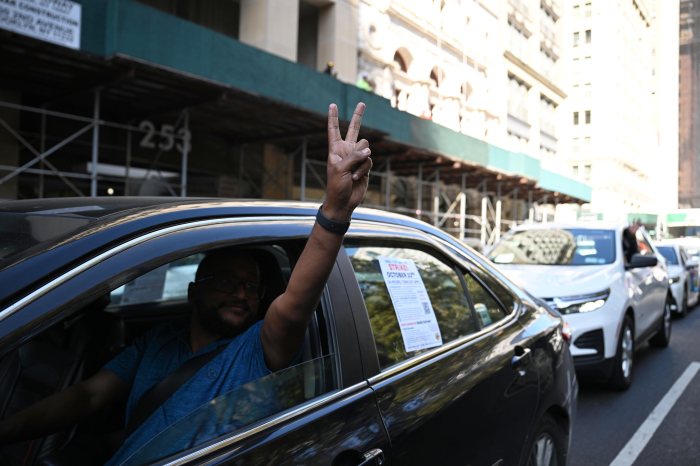
NYTWA, which represents tens of thousands of taxi and for-hire vehicle drivers, has contended the lockout deal could constitute illegal collusion between the rideshare giants and is urging intervention by the Federal Trade Commission. Uber says it has mostly ended lockouts since September, but many drivers now say they frequently cannot accept rides from Lyft.
The taxi workers union has urged the TLC to disregard what it calls “manipulated data” in analyzing utilization rates and determining minimum pay rates for the next year. TLC Chair David Do would not say whether the agency plans to do so, but he has previously noted the Adams-brokered deal was meant only as a “short-term” solution while more robust regulations were crafted.

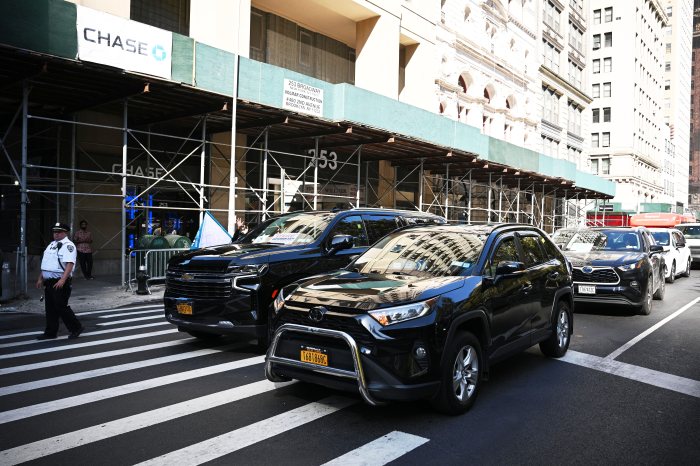
“Drivers have every right to protest. Uber and Lyft have been exploiting loopholes in the City’s minimum pay rule to pay drivers less,” said Do. “We have been actively communicating with advocates and elected officials, with the goal of incorporating their ideas into robust new rule amendments specifically designed to end future lockouts and enforce the Local Law’s original intent.”
Both Uber and Lyft have been critical of the city’s minimum pay formula and have urged reforms to it. A spokesperson for Lyft said the utilization rate requirements directly result in lockouts. “These policies harm drivers and riders, and they need to change,” said Lyft spokesperson CJ Macklin.
Meanwhile, Uber spokesperson Josh Gold claimed the company’s drivers took home more money this summer than last summer overall.
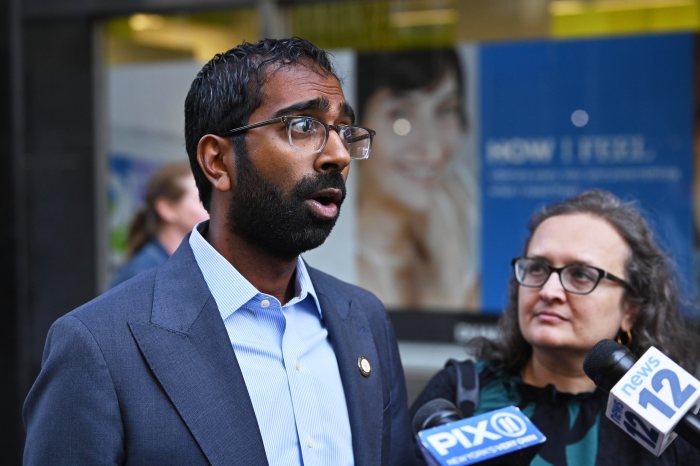
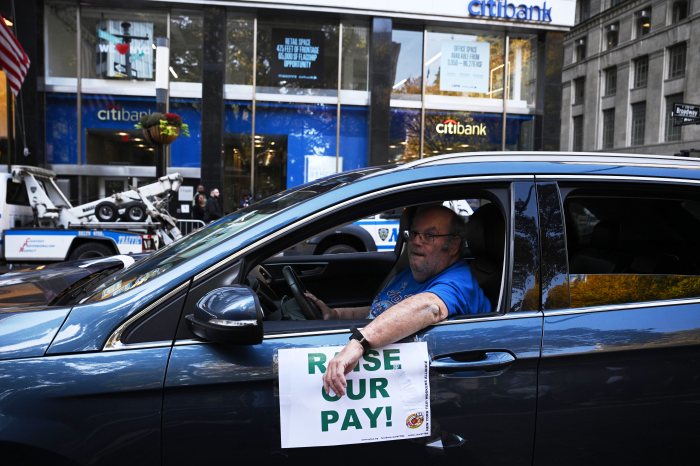
Besides TLC rule changes, NYTWA is also backing a bill in the City Council that would require the companies to prove just cause before “deactivating” a driver, essentially a permanent lockout. Under the text of the bill, sponsored by Queens City Council Member Shekar Krishnan, a driver could pursue a deactivation hearing if they’re locked out of the app for more than 72 hours over a 180-day period.
“What this bill does is provide vital process to protect drivers, to protect their livelihood,” said Krishnan. “And recognize that no worker, especially our essential workers and our taxi drivers, should ever lose their job or fear losing their job overnight with no protection and no notice.”
A Lyft spokesperson said the company is concerned the bill would force riders to “relive traumatic events and provide testimony against their driver, or risk that driver being allowed to remain on the platform.”
Read More: https://www.amny.com/nyc-transit/
